How to Get Rid of Poison Ivy Plants: 6 Tips & Tricks
-
Pete Ortiz
- Last updated:
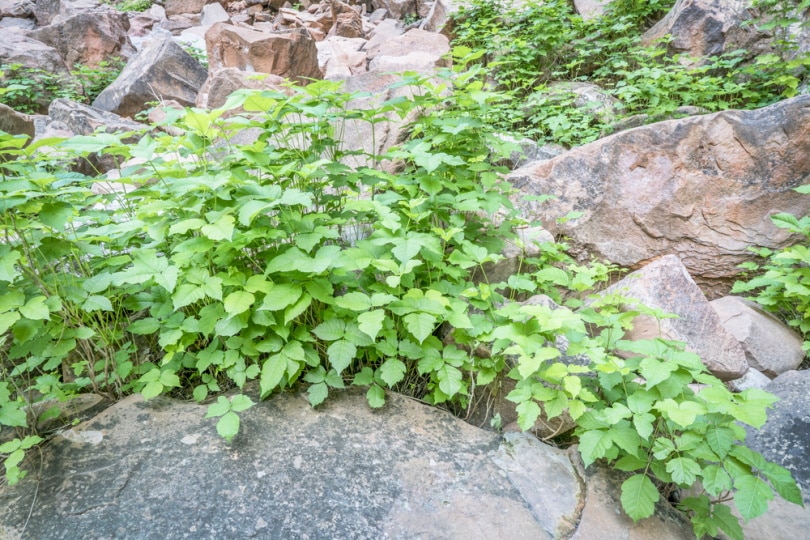
We don’t often expect to see many hazards on the average walk through the backyard, but poison ivy is one pervasive problem that can pop up just about anywhere. Unless you’re the lucky one out of every 10 people that don’t react to poison ivy, these unwelcome plants can leave you itchy, sore, blistered, and uncomfortable for days.
Identifying and removing poison ivy doesn’t have to be challenging. It’s an aggressive grower that needs constant consideration, but a few savvy approaches and essential household tools are all you need to keep it at bay. Learn how to spot the signs of poison ivy and remove it with these six simple tips and tricks.
How to Identify Poison Ivy
“Leaves of three, let it be.”
While not the most detailed warning for outdoor adventurers, it serves as a sound starting point for identifying poison ivy. Plants sport compound leaves with three short-stalked leaflets extending from a stem. They can grow as stretching and climbing vines or as sprawling low shrubs.
Compound leaves grow in alternating arrangements along the stem. The middle leaflet is usually symmetrical, featuring at least one or two teeth on each edge. It sits on a longer stalk than the other leaflets. The other two leaflets are typically asymmetrical, with one smooth edge and one toothed edge.
Leaflet texture can vary greatly, ranging from glossy to dull and hairy to smooth. Spring foliage is red and changes to green in the summer. In the fall, leaves transition to a red or yellow shade, but that doesn’t make them any less rash-inducing.
Clusters of green, five-petaled buds grow in the spring, opening into tiny white flowers. Hard white berries containing a single seed emerge in drooping clusters as summer arrives. Birds and mammals are a common reason poison ivy spreads, as they pick up, digest, and pass the seeds in various places.
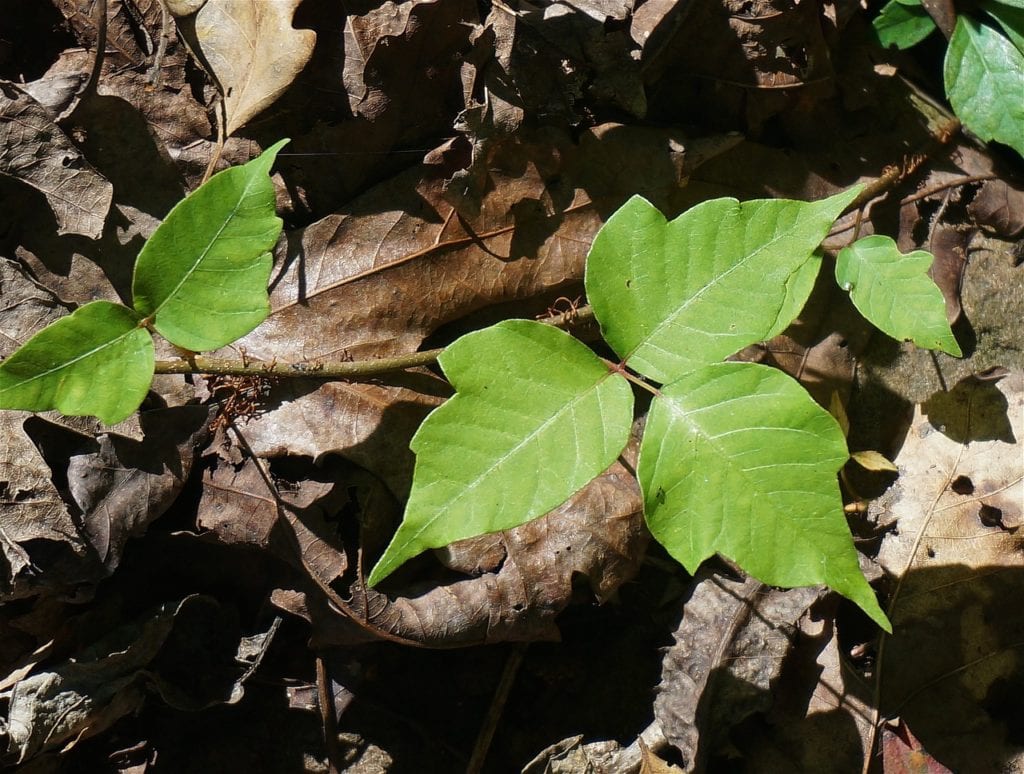
What Does Poison Ivy Rash Look Like?
Poison ivy causes a rash because it contains an abundance of urushiol, an oily resin that occurs across the entire plant and causes an allergic reaction when you touch it. Not everyone reacts the first few times they make contact with poison ivy, but repeated exposures can eventually trigger an allergic reaction.
A poison ivy rash involves itching, redness, swelling, and blistering in the affected area within several hours or days after exposure. It may appear patchy or streaky because the resin only causes a reaction on the skin that touches it.
While there is no cure for a poison ivy rash, it generally fades after 1–2 weeks. In the meantime, you can relieve itchiness and other symptoms with OTC treatments like calamine lotion or hydrocortisone cream. You can also try DIY fixes such as oatmeal baths and cold compresses.
The 6 Tips & Tricks on How to Get Rid of Poison Ivy Plants
Before removing poison ivy plants, remember that they can easily cause a rash if you touch any part of them. Always wear gloves and protective clothing before handling poison ivy.
1. Dig the Poison Ivy Up
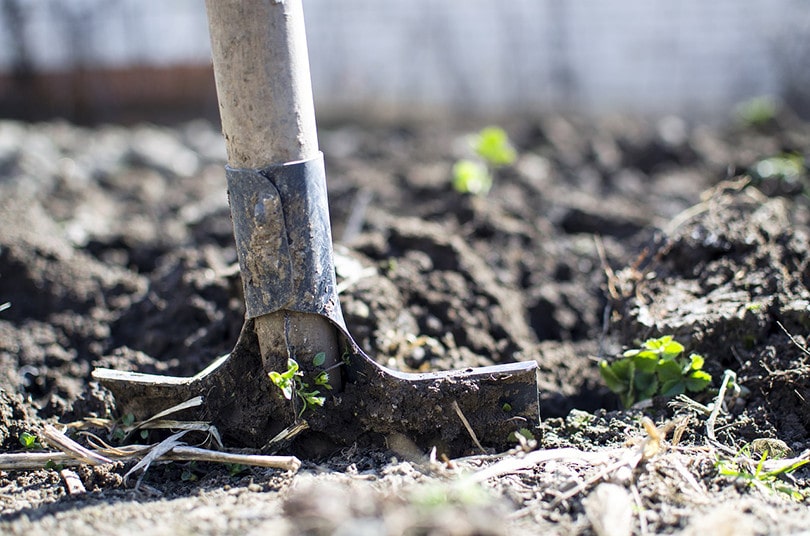
The surest way to get rid of poison ivy is to physically remove it. If you only have a few plants to remove, put your gloves on and dig them up.
Clip the poison ivy plant at about ground level, bag it, and throw it away. Use your trowel or shovel to dig up the rest, making sure to dig several inches around the plant and about 8–10 inches below it to pull out its entire root. Douse the spot in boiling water to kill any remaining poison ivy.
When you are dealing with modest poison ivy growth, you may be able to trim them back throughout the season until they die. If you cut shoots down to the ground whenever you see new growth, they will eventually starve. When poison ivy invades the lawn, weekly mowing is often enough to destroy them.
2. Smother Poison Ivy Plants
You can try killing poison ivy or preventing its regrowth after pulling it by smothering the area. Cover the plants or roots with cardboard, rubber, mulch, or a thick layer of wood chips. Keep an eye out for poison ivy growing around the edges of your cover, as it grows efficiently via underground runners.
3. Use a Homemade Poison Ivy Killer
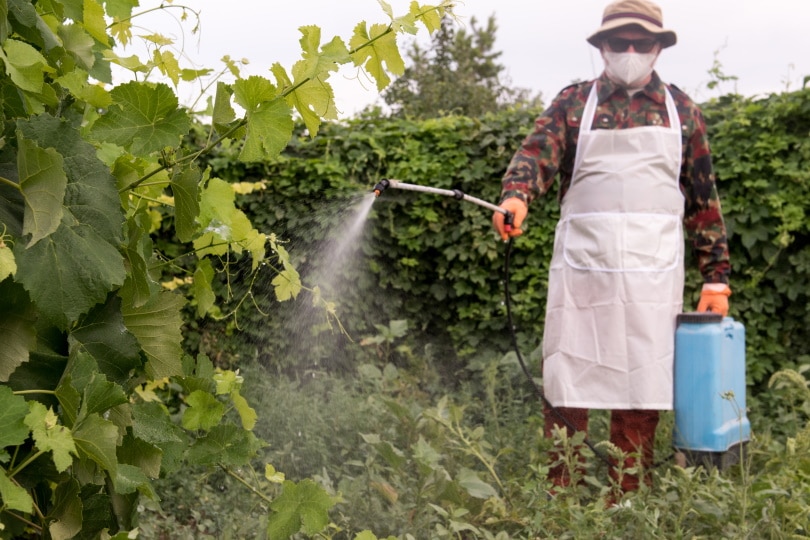
With constant culling, you can often remove poison ivy plants without having to get any herbicide involved. But if you need some extra help, you can whip up a homemade solution to spray on any unwanted growth.
- 1 cup salt
- 1 tablespoon distilled white vinegar
- 1 tablespoon dish liquid
- 1 gallon water
Fill a spray bottle with the solution and liberally apply it to the poison ivy. For a more aggressive solution, mix a cup of salt with half a gallon of white vinegar until it dissolves, and add a tablespoon of dish liquid. Mix this in a spray bottle and douse the plant.
Homemade remedies are not as fast-acting as commercial herbicides, sometimes taking 2–3 weeks to kill the poison ivy. Treated plants will generally require constant monitoring and additional spray applications before dying completely.
4. Try a Commercial Herbicide
Poison ivy can sometimes be challenging to eradicate by hand because they are vigorous growers and develop extensive root systems. Herbicides are efficient at killing it and make a much more convenient solution for widespread growth.
- Glyphosate
- Triclopyr
- Mixed products with 2,4-D, dicamba, mecoprop, or triclopyr
Most herbicides kill indiscriminately, so you must be careful around your desirable plants. Cut back poison ivy stems to about six inches and apply herbicides directly to them if there are other plants nearby. Otherwise, you can take the easy route and spray the leaves. The herbicide can travel down to the root system and kill the plant.
Always follow the instructions on the herbicide label. Each chemical has specific points in the season when it should be used, and they all pose unique dangers to different plants. You may need to spray plants repeatedly to control regrowth.
5. Wash Clothing and Equipment After Handling Poison Ivy
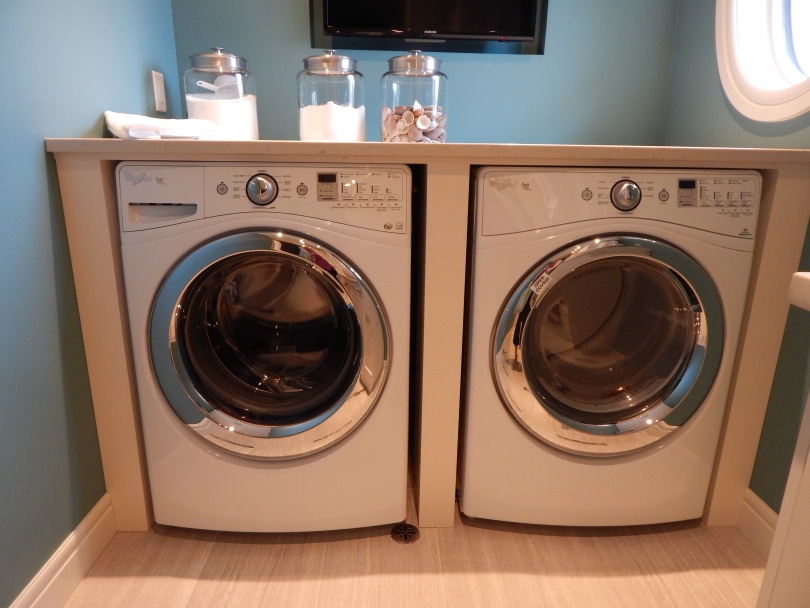
It is crucial to clean everything that may have come into contact with any part of a poison ivy plant after removing it. You must get rid of your clothes and gloves or wash them in hot water separate from your other clothes.
Take a shower immediately, using cool water to wash off, and clean your gardening tools by rubbing them thoroughly with isopropyl alcohol. Urushiol oil only stays active on the skin for 30 minutes, but it may last anywhere from 1–5 years on many surfaces, and removing any trace with an effective degreasing agent is crucial.
6. Stay Vigilant for New Poison Ivy
Poison ivy won’t give up without a fight, so you must check the area frequently to ensure it doesn’t return. Treat young plants and stragglers immediately with a poison ivy killer or cut them back. After several months of maintenance, you should eventually see the poison ivy disappear for good.
Final Thoughts
Poison ivy has no benefit in the backyard, and you shouldn’t have to feel confined by the presence of the three-leafed threats. It belongs in one place: thrown away in a sealed plastic bag. Don’t try to touch, burn, or compost poison ivy. Instead, follow these tips and tricks to get rid of poison ivy safely, effectively, and permanently.
Featured Image Credit: marekuliasz, Shutterstock
Contents


